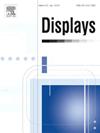vAQA-SS: Vision-based action quality assessment for style-based skiing
IF 3.7
2区 工程技术
Q1 COMPUTER SCIENCE, HARDWARE & ARCHITECTURE
引用次数: 0
Abstract
Vision-based Action Quality Assessment (AQA) aims to evaluate action quality in video data, aligning with the subjective scores of human experts. Due to the unique challenges posed by different sports, it is difficult to design a uniform AQA system applicable to all sports. Consequently, many current sports AQA methods focus on specific disciplines such as diving and gymnastics. In contrast, skiing AQA, characterized by high-dynamic actions and complex outdoor scenes, faces additional challenges. Therefore, we constructed a specific dataset for style-based skiing, which focuses athlete’s movement style and execution, encompassing diverse skiing events with detailed annotations on action classes and athletes’ final scores, named Skiing-6. Leveraging this dataset, we designed two vision-based skiing action quality assessment (vAQA-SS) models. One model directly generates an absolute AQA score by measuring the quality of an athlete’s actions in the input video without any external reference, termed orAQA, which assesses athlete performance based on low-level spatiotemporal features of the video data alongside high-level pose features. The other model calculates a relative AQA score, deriving the performance score of an athlete’s actions from the source input video with a reference video, termed wrAQA. Finally, we conducted extensive experiments on Skiing-6 and SkiTB to demonstrate the effectiveness of our vAQA-SS models. The results demonstrate that our approach achieves significant improvements in both absolute evaluation (orAQA) and relative evaluation (wrAQA), surpassing other similar sports AQA methods.
求助全文
约1分钟内获得全文
求助全文
来源期刊

Displays
工程技术-工程:电子与电气
CiteScore
4.60
自引率
25.60%
发文量
138
审稿时长
92 days
期刊介绍:
Displays is the international journal covering the research and development of display technology, its effective presentation and perception of information, and applications and systems including display-human interface.
Technical papers on practical developments in Displays technology provide an effective channel to promote greater understanding and cross-fertilization across the diverse disciplines of the Displays community. Original research papers solving ergonomics issues at the display-human interface advance effective presentation of information. Tutorial papers covering fundamentals intended for display technologies and human factor engineers new to the field will also occasionally featured.
 求助内容:
求助内容: 应助结果提醒方式:
应助结果提醒方式:


